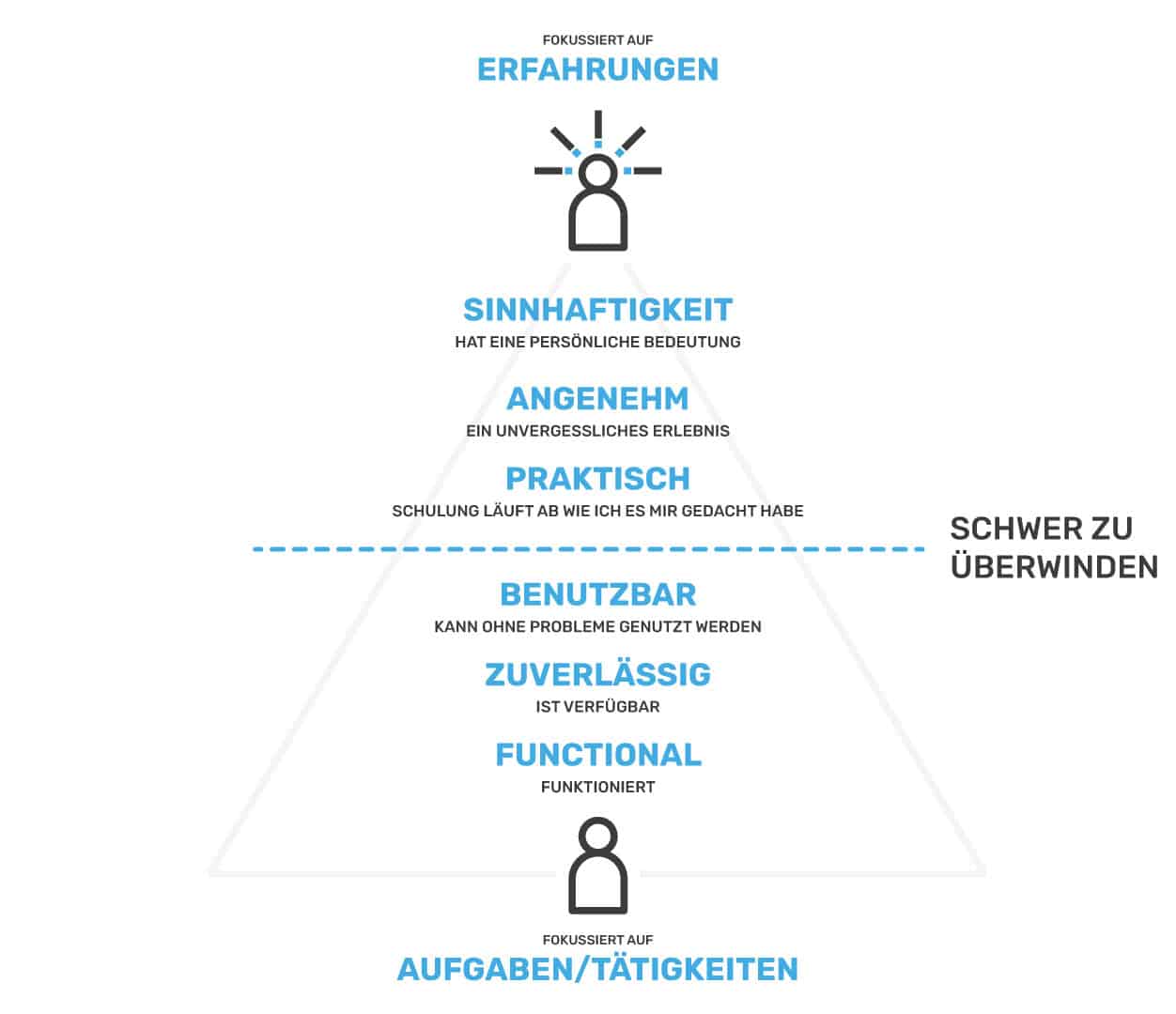lxd
Learning Experience Design
Learning Experience Design: What You Need to Know About It
At skillbest, we always put learners and their needs at the center. This approach has a name: Learning Experience Design.
Let’s start directly with a comparison: Learning Experience Design (LXD) in e-learning is like sports in everyday life. People should incorporate much more exercise into their daily lives to become more successful and healthier. The problem: Sport takes time and is often strenuous. Learning experience design in e-learning is similar. LXD is indispensable for designing effective and successful e-learning, but it is not considered enough in e-learning design. The consequences – overloaded presentations without added value or monotonously conducted webinars – are unfortunately well known to most who have taken digital training themselves. If you’ve thought a bit about our sports comparison, you’ve probably noticed the small but practical flaw: No one can take the sports program off your hands, but the learning experience design for successful e-learning offerings can. As an experienced e-learning provider, this is one of our core competencies. But before we go into more detail, let’s turn our attention to the definition of learning experience design.
What is Learning Experience Design?
Learning Experience Design is a holistic, interdisciplinary approach that focuses on enjoyable and meaningful learning experiences. An exact definition is provided by the colleagues at LXD.org: “Learning experience design (LX design) is the process of creating learning experiences that enable the learner to achieve the desired learning outcome in a human centered and goal oriented way.”
The focus of Learning Experience Design is therefore on people and their experiences. And “experience” is already the decisive keyword: Unlike conventional training courses with little added value, the focus of LXD is not on the tasks, but on the experience. Don’t get us wrong: of course, task-centered training can also lead to the goal, but learning in this way is neither enjoyable nor meaningful. Let us illustrate these remarks using Maslow’s pyramid of needs, which we have adapted a little to our topic:

Tasks – here the basis of our pyramid – are often the foundation in e-learning design: according to this logic, e-learning offerings must above all be reliable and usable and, in the best case, function without problems. But good e-learning goes beyond these functional aspects. And this is where Learning Experience Design comes in. In order to provide practical, enjoyable, and most importantly, meaningful learning experiences, the pyramid must be understood from the top down. In LXD – and here we come full circle to the definition above – people and their learning experiences are at the center of the e-learning design. To make these experiences truly practical, enjoyable, and meaningful, LXD combines insights from neuroscience, user experience design, and instructional design.
But beware: although the focus of good e-learning should always be on the target audience and their experience, essential usability basics should not be overlooked. Only those who manage to address both sides of the pyramid of needs can create an effective e-learning experience.
6 LXD facts to consider
Everything we have executed so far sounds great and it is. However, there are a few things to keep in mind when it comes to learning experience design as well:
Preparation is everything
Learning Experience Design needs a plan that is first without visuals and without great UI, but picks up the learning objectives and user needs. After that, a visual design strategy should then be determined, usability planned, and the entire plan subjected to testing and validation.
Nothing works without motivation
e-Learning thrives on targeting motivational factors. LXD provides the best prerequisites for this, as the appealing design of user interfaces plays just as important a role as addressing the respective target group needs.
Wireframes make ideas more tangible
Similar to homepage design, LXD can work with wireframes or mockups. This makes the respective ideas more tangible and the learning path clearer.
Test, test, test
Whether and how an e-learning offer works can only be found out with the help of tests. It is important that the test persons come from the target group. This is the only way to guarantee a coherent LXD.
Even LXD has its limits
LXD is highly effective, but requires some time, human as well as technical resources. A too small budget, time pressure or technical limitations with regard to the learners’ end devices can make the LXD process difficult or impossible.
You would like to learn more? We would be happy to tell you one or two more things about the above. If you are currently in the digitization phase of your classroom training or would like to learn more about Learning Experience Design, we look forward to hearing from you.
